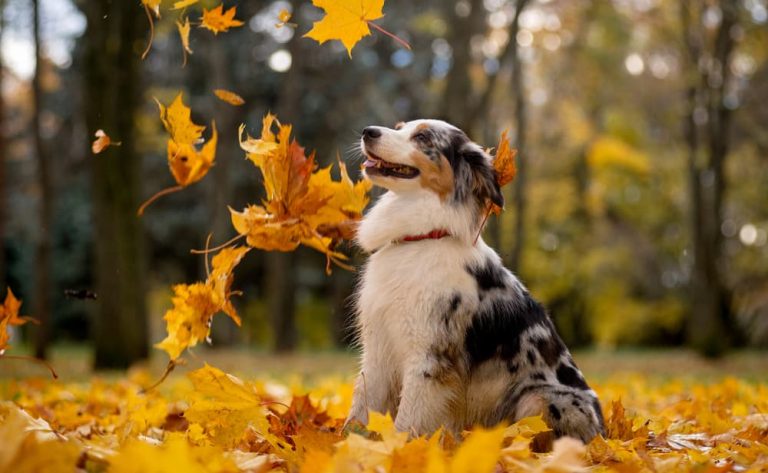 As the leaves change colors and the weather cools down, we all look forward to the beauty of fall. It's a season of cozy sweaters, pumpkin-spiced everything, and outdoor adventures with our four-legged companions. However, just like any other season, fall comes with its own set of challenges and potential risks for your pets. Here are some essential safety tips to keep your furry friends happy and healthy this autumn.
As the leaves change colors and the weather cools down, we all look forward to the beauty of fall. It's a season of cozy sweaters, pumpkin-spiced everything, and outdoor adventures with our four-legged companions. However, just like any other season, fall comes with its own set of challenges and potential risks for your pets. Here are some essential safety tips to keep your furry friends happy and healthy this autumn.
Beware of Toxic Plants
Fall often brings a burst of colorful foliage, but some of these plants can be toxic to pets. Keep an eye out for toxic plants that pet owners should be aware of during the fall season:
Mushrooms:
Fall is a time when mushrooms of various shapes and colors can sprout up in yards and wooded areas. While many mushrooms are harmless, some can be highly toxic to pets if ingested. Toxic mushrooms can cause a range of symptoms, including gastrointestinal upset, liver or kidney damage, and in severe cases, even fatal.
To protect your pets from mushroom toxicity:
- Regularly inspect your yard and outdoor areas for any unfamiliar mushrooms and promptly remove them.
- If you're uncertain about the safety of mushrooms in your area, it's best to discourage your pet from foraging while outside.
- If you suspect your pet has ingested a toxic mushroom or is showing any unusual symptoms, contact your veterinarian immediately.
Certain Berries:
During the fall, some berry-bearing plants produce colorful fruits that can be enticing to pets. While not all berries are harmful, it's essential to be cautious about which ones your pet might come into contact with. Berries such as holly berries, certain varieties of elderberries, and yew berries can be toxic to pets when ingested.
To prevent berry-related toxicity:
- Familiarize yourself with the types of berries that grow in your area and their toxicity to pets.
- If you have berry-producing plants in your yard that are toxic, consider fencing them off or using barriers to prevent your pet from accessing them.
- Be vigilant during walks in parks or wooded areas, and discourage your pet from nibbling on unknown plants or berries.
Decorative Plants Like Mums:
Mums, short for chrysanthemums, are popular fall decorative plants known for their vibrant and diverse colors. While they add beauty to your home's exterior, they can be harmful to pets if ingested. Mums contain compounds that can cause gastrointestinal upset and, in some cases, more severe symptoms.
To safeguard your pet from mum-related toxicity:
- Place potted mums in areas that are inaccessible to your pets, such as on high shelves or suspended planters.
- If you have outdoor mums in your garden, create physical barriers or use pet-friendly deterrents to prevent your pet from reaching them.
- Educate your family members and visitors about the potential toxicity of mums and the importance of keeping them out of reach for pets.
Make sure your pet doesn't nibble on these harmful plants during your outdoor walks.
Stay Current on Flea and Tick Prevention
Even though the temperatures are dropping, fleas and ticks can still pose a threat during the fall season. Guardian's Choice Pet offers effective flea and tick defense soft chews for dogs and cats. Make sure your pets are protected year-round, as these pests can transmit diseases to both your pets and your family.
Maintain a Consistent Routine
Fall can bring changes in your daily routine, such as shorter daylight hours and cooler weather. It's important to maintain a consistent schedule for feeding, exercise, and bathroom breaks for your pets. This stability provides them with a sense of security and helps reduce stress.
Dress for the Weather
Fall brings cooler temperatures and, in some regions, even chilly winds. While some pets, particularly those with thick fur coats, are naturally equipped to handle cooler weather, others may need a bit of help staying comfortable during outdoor activities. Here's why dressing your pet for the weather is essential:
Understanding Your Pet's Needs: Pets, like humans, have varying levels of tolerance to cold temperatures. Factors such as breed, size, age, and overall health can affect how well a pet can handle cooler weather. Small dogs, toy breeds, and those with short hair are generally more susceptible to feeling cold.
Doggy Sweaters or Coats: Investing in a doggy sweater or coat for your pet, especially if they are small or have short fur, can make a significant difference in their comfort during fall walks. These clothing items provide an extra layer of insulation, helping to retain your pet's body heat and keep them warm.
Protecting Their Paws: In addition to keeping their body warm, it's essential to protect your pet's paws from the cold pavement. As temperatures drop, pavements can become uncomfortably cold for your pet's sensitive paw pads. Consider using pet-safe booties or paw wax to shield their paws from the cold ground and potential irritants like de-icing chemicals.
Signs of Cold Stress:
It's crucial to pay attention to your pet's behavior during outdoor activities. If your pet is shivering, seems reluctant to walk, holds their paws up, or exhibits signs of discomfort like whining or slowing down, these are indications that they may be feeling too cold.
Gradual Acclimatization: If your pet is not used to wearing clothing or booties, introduce them gradually. Allow your pet to get used to the clothing indoors before taking them outside. Positive reinforcement, treats, and praise can help them associate wearing these items with a positive experience.
Keep an Eye on Weather Conditions: Stay informed about the daily weather forecast, particularly temperature and wind chill. On exceptionally cold or windy days, it's advisable to limit outdoor activities or shorten walks to ensure your pet's well-being.
Comfort Equals Safety: Remember that a comfortable pet is a safe pet. When your pet is adequately dressed for the weather, they are less likely to experience discomfort, stress, or potential health issues associated with exposure to cold temperatures.
Keep Halloween Treats Out of Reach
Halloween candies and chocolates can be toxic to pets. Ensure that all your Halloween treats are stored securely out of your pet's reach. The last thing you want is a pet with an upset stomach or worse due to ingesting something they shouldn't have.
Watch Out for Wildlife
Fall is a season when wildlife is more active. Keep a close eye on your pets during outdoor excursions to prevent encounters with skunks, raccoons, or other wild animals that could potentially harm or carry diseases.
Prepare for Holiday Travel
If you plan on traveling for Thanksgiving or other holidays, make arrangements for your pets in advance. Whether it's finding a trusted pet-sitter, booking a kennel, or taking your pet with you, plan ahead to ensure their safety and comfort.
By following these safety tips, you can make the most of the fall season with your beloved pets without worrying about potential risks. Remember that Guardian's Choice Pet is here to help you protect your furry friends from fleas and ticks with our safe and effective soft chews. Enjoy the beauty of autumn with your pets by your side, knowing you're keeping them happy, healthy, and safe.
Stay tuned for more pet care tips from Guardian's Choice Pet!






